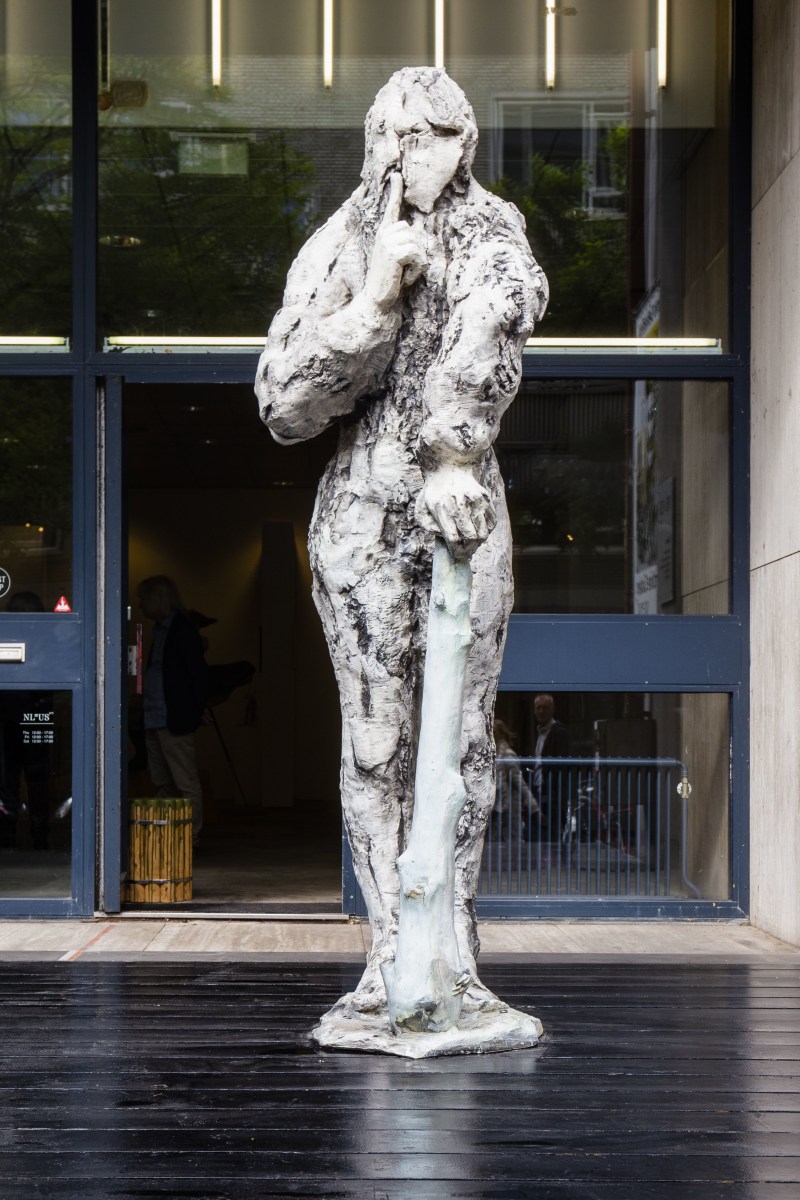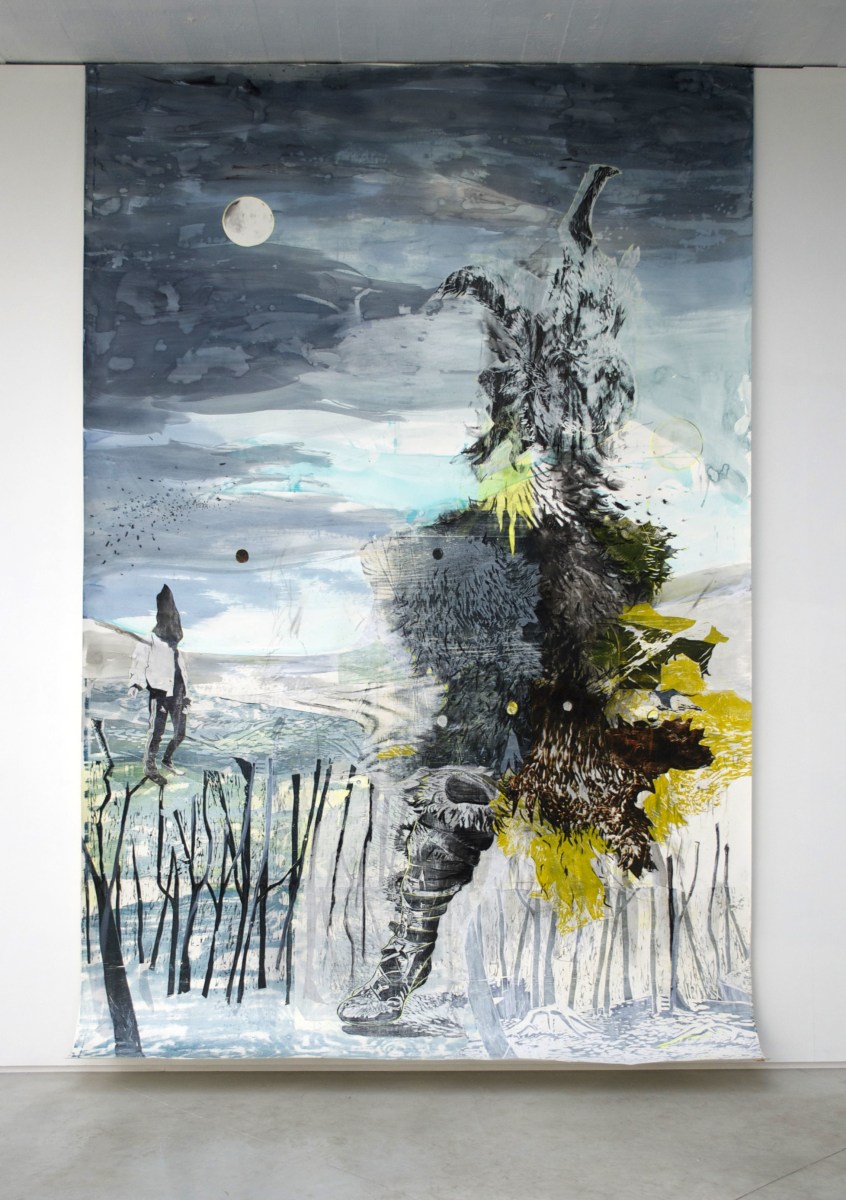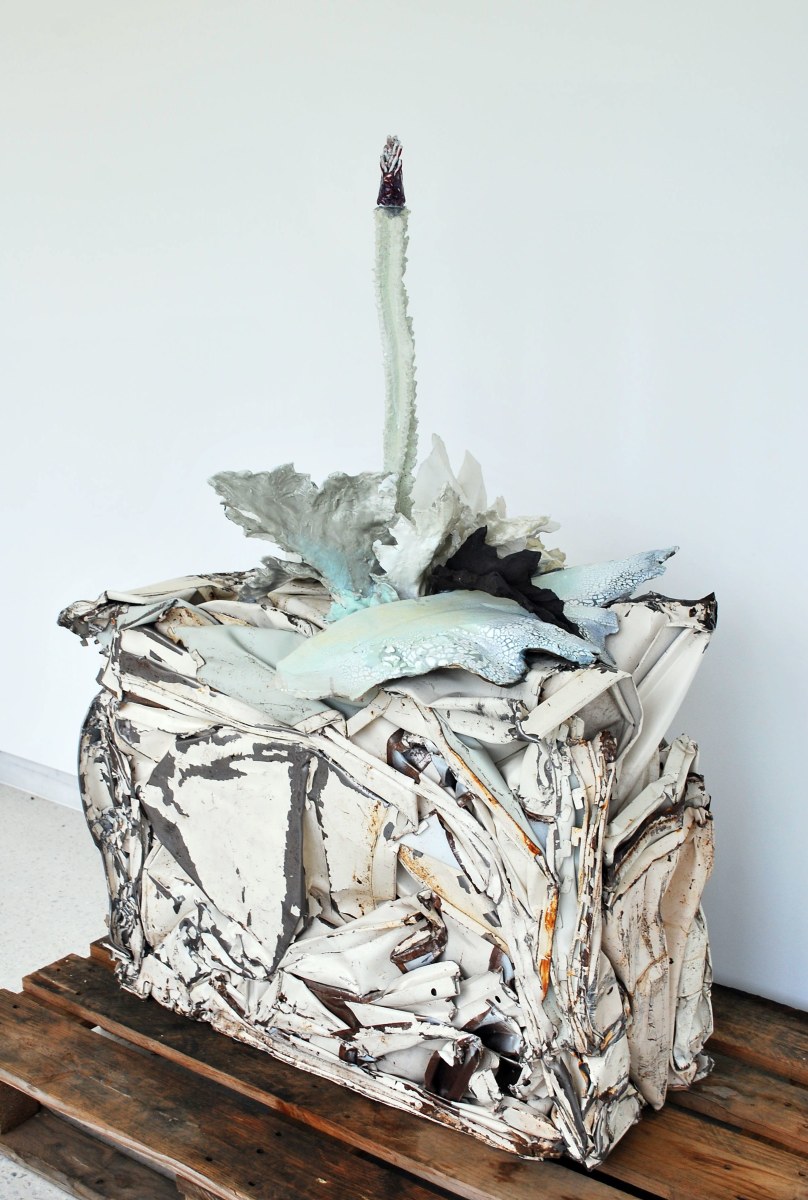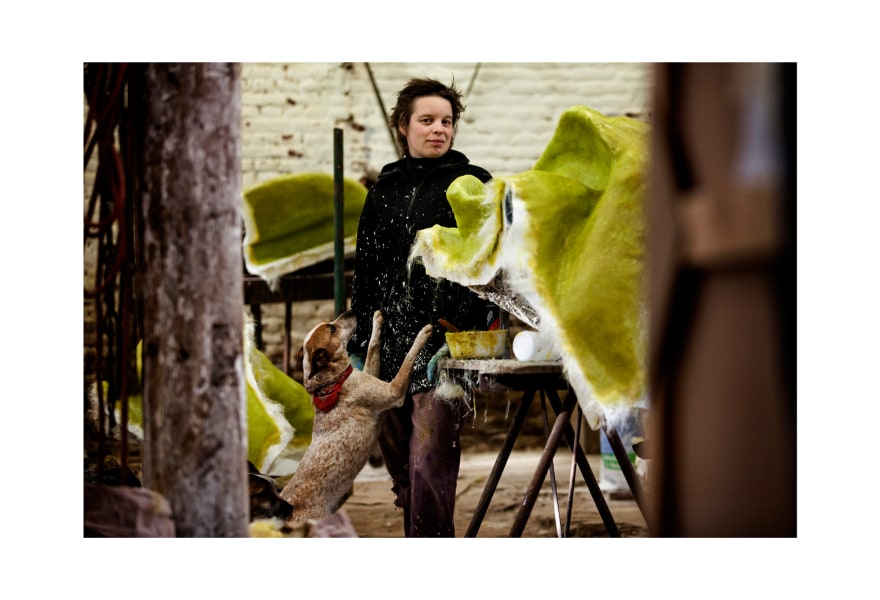13 june 2023, Wouter van den Eijkel
The studio of... Caroline Coolen
Caroline Coolen’s studio in housed in an old farmhouse in the rural surroundings of Sint-Truiden. Her need for greenery, as she calls it, translates into work in which she compresses impressions from nature and her surroundings in order to gain a grip on the world. She has named the exhibition at NL=US after a species of thistle, the Tatarnik, a plant species that generally receives little appreciation. Coolen draws inspiration from this because of the plant’s resilience. She believes thistles are a powerful metaphor for a directional guide for art, the artist and life. “By embracing the maladjusted, I want to emphasise the beauty of the margin, of what ordinary life actually is.”
Where is your studio and what does it look like?
I live and work in an old square farmhouse near Sint-Truiden. The house dates back to 1611! The old stables and barn are used as studios and there’s a lot of outdoor space.
Do you receive visitors or do you prefer to work alone?
Given my remote location, I don't get many visitors. I share the various studios with my partner. After graduating, I decided to leave the city because I am too easily distracted there and like to be surrounded by greenery.

Making the mold, Uomo Selvatic
Natural light is always an important requirement for painters. What makes a good studio for you?
Volume, height and light, preferably also walls and outdoor space.
The relationship with the landscape, nature and animals is central to your work. You want to present a condensed representation of our environment, our Umwelt. Can you explain how you came up with that theme and why?
It simply presented itself. I am an observer and things simply attract my attention, fascinate me. It is rather a multitude of impressions that I process by compressing them into an image in order to gain a grip on the world.

Caroline Coolen, Uomo Selvatic, NL=US Art
Your oeuvre consists of drawings and woodcuts, as well as assemblages and sculptures. What is your creation process? Do you first decide which medium you want to use and then come up with the subject or vice versa?
The subject comes first. I don't have to look for how to work something out because it steers itself. Like shape and colour, the medium also has the power of expression. Or the manner of origin. Very often, there is an interaction between the two-dimensional and the spatial, especially when I show work in an interior space. One is almost impossible for me without the other.
Your current exhibition at NL=US is called Tatarnik, which is a type of thistle. Can you explain what appeals to you about this plant, which is often considerable undesirable by gardeners?
I often come across unwanted species or underdogs. It’s pioneering vegetation. It inspires me because of its resilience. It also offers resistance, a very powerful metaphor for a directional guide for art, the artist and life. It's about emphasising that other side, the one we don't think about. I'm hopeful that there is more focus on re-wilding today. The awareness is starting to sink in that we have to look differently (not purely economically) at our environment. By embracing the maladjusted, I want to emphasise the beauty of the margin, of what is actually ordinary life. You just need to take the time for a detour and occasionally an out-of-the-way path, wander through the urban or real wilderness and marvel at what you encounter.

Caroline Coolen, Moonman, NL=US Art
For Tatarnik, you selected works that match the historic building that now houses NL=US Art. What was your focus when choosing works?
I mainly chose fauna and floral motifs whose colour and subject match the ceiling paintings and stained-glass windows. Except that my work is not subservient. It is a means of communication, yet vibrates with its context.
I enjoy an opportunity to embrace the space. This is a gift for my current work. Visually, it fits very well with the building, but make no mistake, the work was not created out of purely aesthetic convictions. It questions ranking: what is 'harder, better, faster, stronger'? It borders on the political. Titles such as The Wheat and the Chaff question what is more important. It contains many references and/or queries to status. The metal framework is derived from the zinc works of the Romani people from Eastern Europe.

Caroline Coolen, Nimby, NL=US Art
There are many artists who make work about nature or our relationship with it, but your work seems more isolated. Would you agree?
The work is not a pamphlet, nor is it subservient or a design. It is not designed for an environment. It is autonomous. It can enter into a relationship with other work and a different environment without losing its meaning. Obviously, an environment contributes to the power of expression. I am also very sensitive to this.
Which artists do you relate to most?
My first, earliest love were the sculptures of Picasso and the Cubists, Futurists, Constructivists and Fauvists. I think this is where my formal foundation can be found. Lois Weinberger appeals to me in terms of content, while Pierre Huyghe is extraordinary. Otobong Nkanga has an associative mind and I am well able to follow that way of thinking and processing. My interests are constantly shifting and progressing. Art is a form of knowledge transfer that continues to fascinate.

Caroline Coolen, Qui s’y frotte, s’y pique, NL=US Art
If you were to explain your work to someone who knows nothing about art, what would you say?
That I take a journey, gather impressions and process them. That is very simplistic, of course, but a good start. It depends on which aspect I want to highlight.
What are you currently working on?
The growing season is in full swing again, so I have to harvest (process) my thistles. I still have plans for them, but I have to think ahead, because every day that I do not harvest is a missed stage. I observe them and determine whether they are sculpturally compelling.
I am also currently preparing a project on the forgotten history of the Genck school of painting (1850-1950). This history was overwritten by coal mining in Limburg from the early 20th century onwards. It touches on my roots and my other favourite motif of the birch tree. It also has to do with conservation. It was thanks to a number of artists at the time that nature was preserved and not lost to profit. That is inspiring because it shows that art can save the world after all, or at least yourself... to some extent.
There are still a few exhibitions coming up for which I want to develop new work or paths to follow, but have not yet fully understood.
Next spring/summer, I will be working on Beeldecho's, a project with David Bade in relation to the sculpture collection in Rotterdam. I was invited to participate. Due to its public nature, it requires a lot of research and responsibility. It promises to be quite a daunting task, one that is both exciting and challenging.

Caroline Coolen
